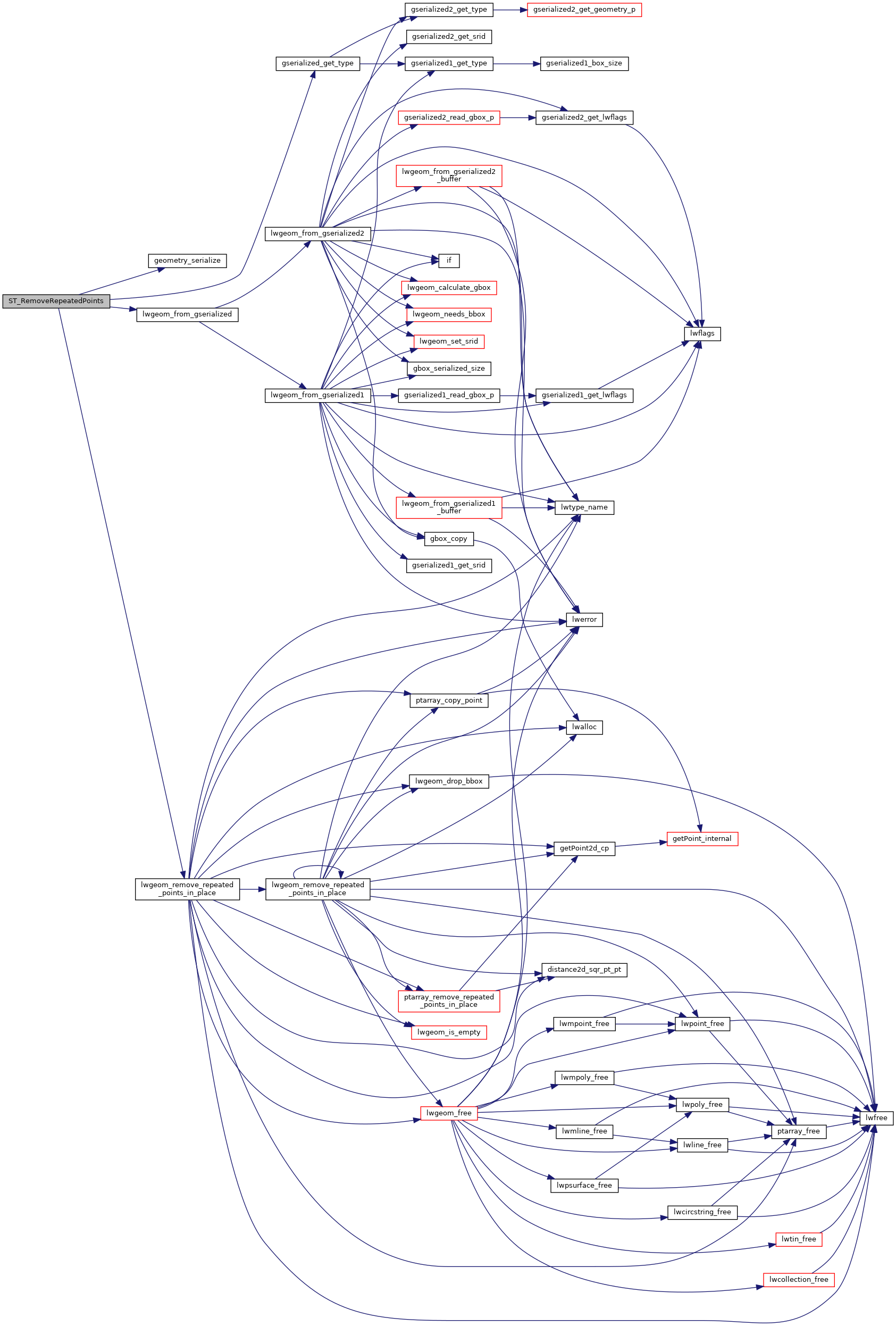◆ ST_RemoveRepeatedPoints()
| Datum ST_RemoveRepeatedPoints | ( | PG_FUNCTION_ARGS | ) |
Definition at line 2786 of file lwgeom_functions_basic.c.
LWGEOM * lwgeom_from_gserialized(const GSERIALIZED *g)
Allocate a new LWGEOM from a GSERIALIZED.
Definition: gserialized.c:239
uint32_t gserialized_get_type(const GSERIALIZED *g)
Extract the geometry type from the serialized form (it hides in the anonymous data area,...
Definition: gserialized.c:89
int lwgeom_remove_repeated_points_in_place(LWGEOM *in, double tolerance)
Definition: lwgeom.c:1554
GSERIALIZED * geometry_serialize(LWGEOM *lwgeom)
Definition: liblwgeom.h:429
Definition: liblwgeom.h:443
References geometry_serialize(), gserialized_get_type(), LW_FALSE, lwgeom_from_gserialized(), lwgeom_remove_repeated_points_in_place(), POINTTYPE, and ovdump::type.
Here is the call graph for this function:
